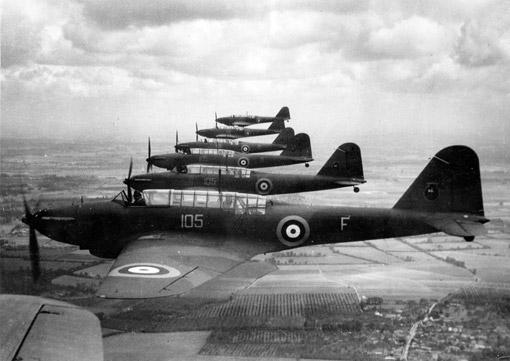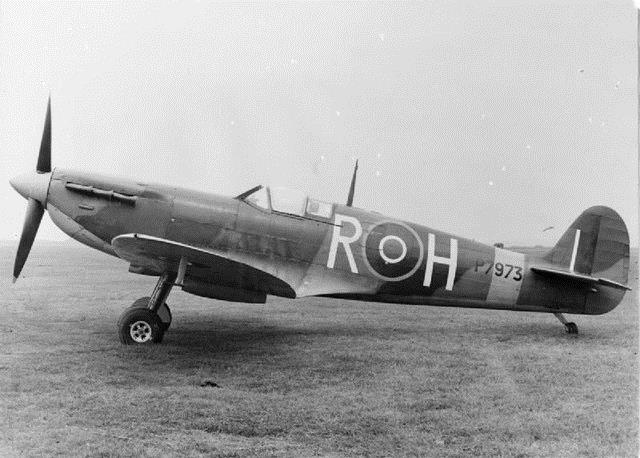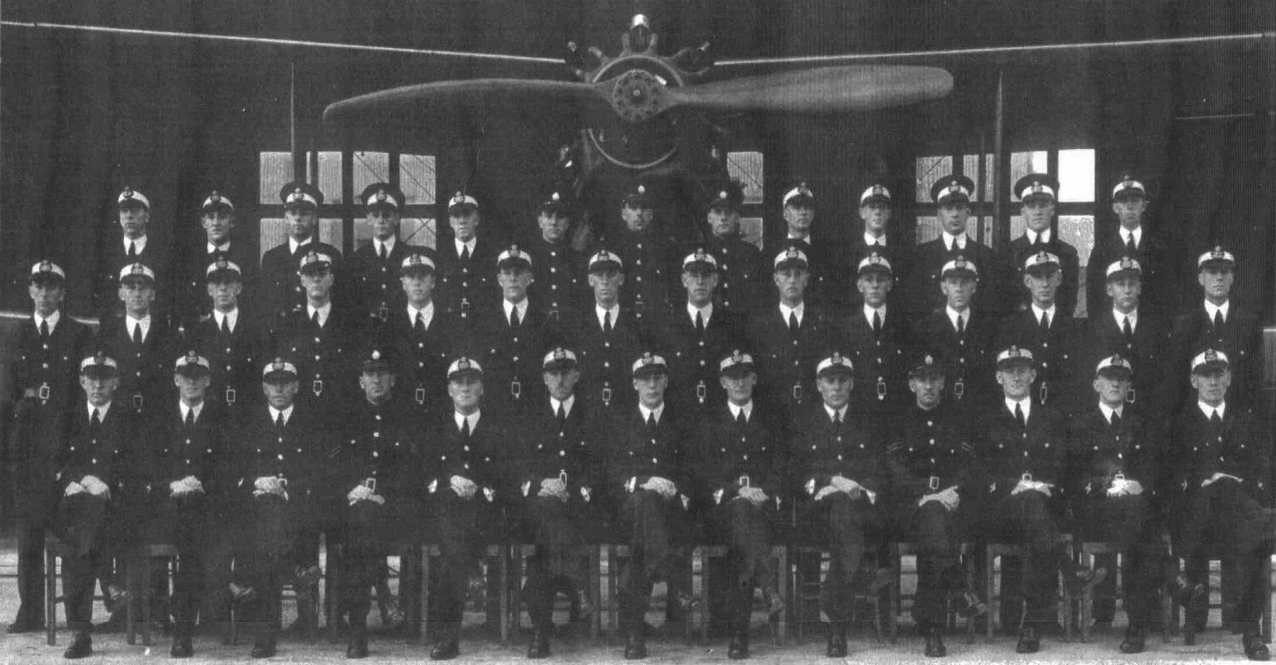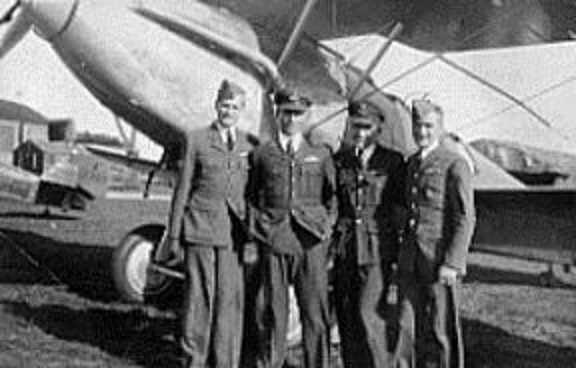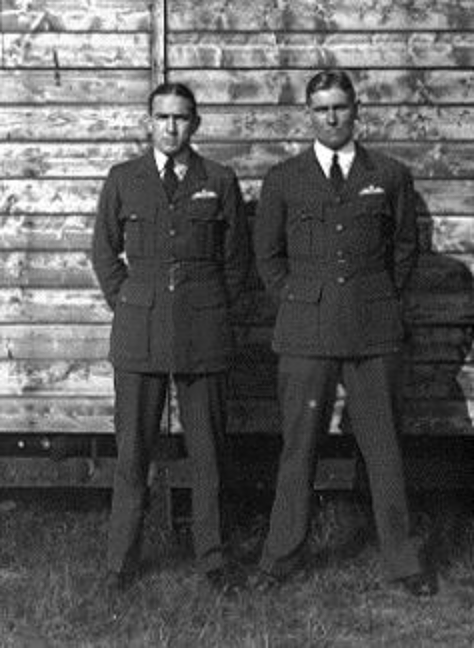SQNLDR Robert Wilton Bungey 257414 (40042)
DFC
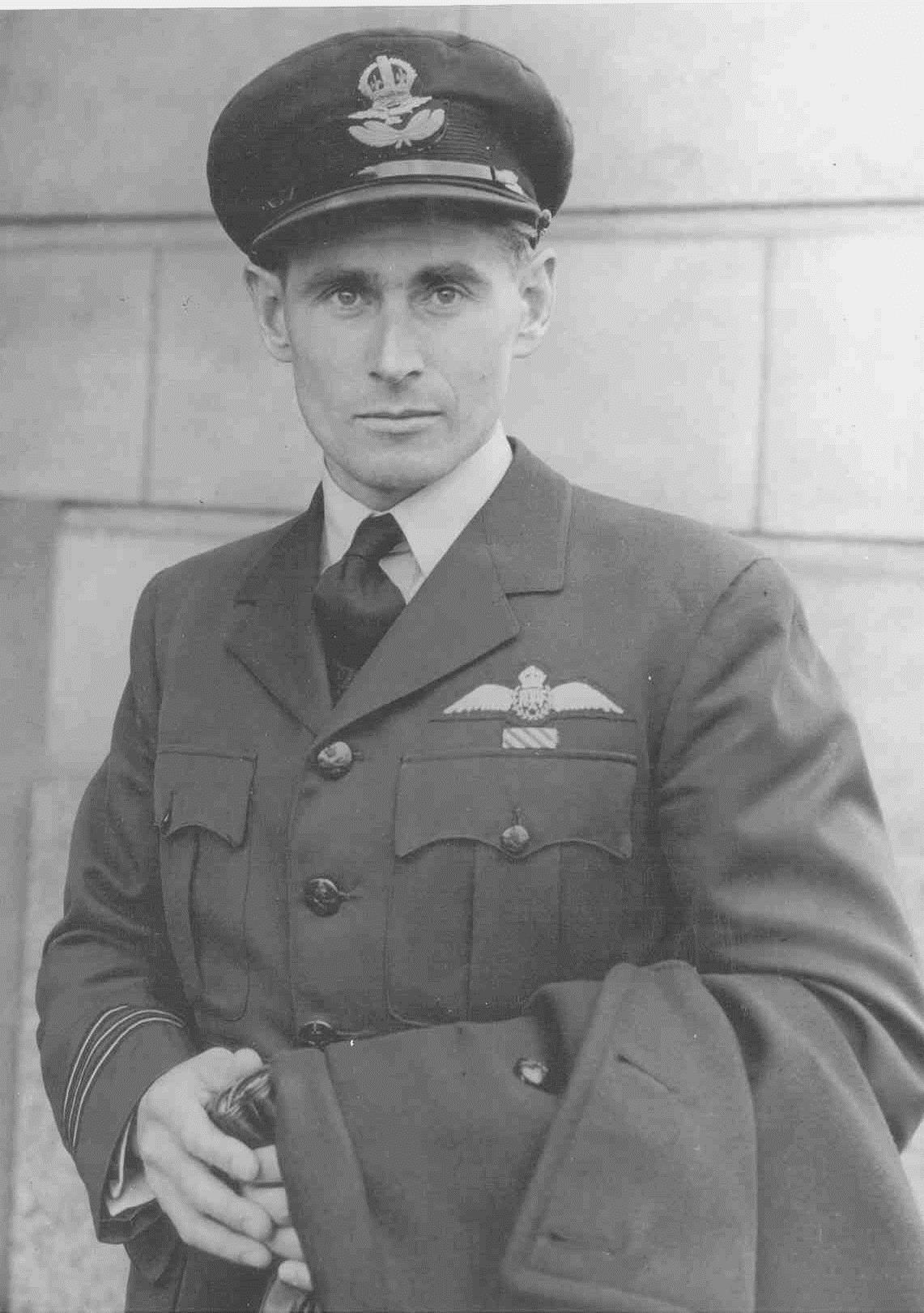


| Squadron/s | 452 SQN |
| Rank On Discharge/Death | Squadron Leader (SQNLDR) |
| Nickname | Bob |
| Mustering / Specialisation | Pilot |
| Date of Birth | 04 Oct 1914 |
| Date of Death | 10 Jun 1943 |
| Contributing Author/s | Richard Bungey and Steve McGregor Additional material by Vince Conant The Spitfire Association June 2013 |
Bob Bungey was born 4th October 1914 to Ernest & Ada Bungey of Fullarton. He was educated at Glenelg Primary School and Adelaide High School.
From school he worked briefly at the Ajax Insurance Company, as a clerk before enlisting in the RAAF at Point Cook. Upon graduation he enlisted in the RAF in the UK and after further training he was posted to 226 Squadron (Fairy Battles) based at Harwell in Berkshire.
As time progressed and the threat of war with Germany increased Bob's unit was ordered to France as part of the British Expeditionary Force and they flew to their base at Rheims. As the war progressed Bob was executing various missions including attacking the German advance where the Germans had trapped some French soldiers and because of the Squadron's action the French were saved from capture. The Squadron was highly praised by the British Commanding Officer. Another raid undertaken was the attack on the bridge at Maastrict in Holland where Bob was lucky to come out of that raid alive as the Fairy Battles were nearly all shot down by the Me 109 German fighters.
When Bob returned to England he left 226 Squadron and volunteered to join Fighter Command and was posted to 145 Squadron (Hurricanes) which was in Group 11. Bob showed that he had leadership qualities and he was promoted up the ranks and was noticed by higher Command. There was one event that comes to mind: he and several of his fellow pilots were patrolling off the Isle of Wight and were jumped by a number of German Me109s and after a fierce fight a number of the flight were shot down (including Bob) at Littlestairs Point near Shanklin. He managed to put his Hurricane down in three feet of water before scrambling out of his aircraft injured but managing to get to a hospital close by where he got a change of clothes and then returned to his Squadron at Tangmere. Bob's only comment was that the water was frightfully cold.
Two days later he was back in the air combining with Pyker Offenberg to shoot down a German Bomber.
On 9 June Bob was promoted to Squadron Leader and was posted to 452 squadron as the Commanding Officer of "B" Flight. 452 Squadron was the first Australian Spitfire Unit formed in England. Apart from the two Flight Commanders the pilots were very inexperienced people and Bob had the great task in moulding them into a viable fighting unit. This he did with the able help of his Flight Commanders, namely Paddy Finucane and Dougie Douglas. Under Bob's leadership 452 Squadron was so successful against the enemy that for three months they were the highest scoring Squadron for the number of enemy shot down and equal for a fourth month in all of Fighter Command.
There was another occasion where Bob showed great concern for his pilots, when on a mission into France to bomb the rail yards at Lille. They were jumped by German Me 109s and became seperated.
After fighting their way out of France into the channel, Bluey Truscott was shot down. He landed in the sea safely and got into his dingy, and Bob circled above him with his transmitter on so that the Sea-Rescue boys could get a bearing on him and affect a rescue. Later when Bluey Truscott got back to the squadron he sought Bob out to thank him for saving his life. Also on the same engagement, Bob helped the late David Downs get back to Manston as he was very low on fuel and he said to me that he certainly would not have made it back on that day only for the help that Bob had given him.
Squadron Leader Truscott said of Bob, "Wing Commander Bungey made the Australian Spifire Squadron! Not Finucane or anyone else. Wing Commander Bungey would not take leave so that he could continue to fly at the head of his men. He was such a wonderful leader that we would follow him anywhere. We think he is the best Squadron Leader in the war."
Another article which gives high accolades to Bob appeared in an RAAF publication "Kings of the Clouds" in 1943 and I quote:
"One of the greatest air organisers Australia has ever produced was the late Squadron Leader Bungey, a young man of Glenelg, South Australia. He was a commander of Squadron 452 and showed genius in his job. It was his fine spirit, discretion and care for his men that laid the foundations of success. The Squadron worshipped him and its morale was unbeatable.
Bob was awarded the DFC and the article from the London Gazette, dated 7/10/1941 says:-
This officer has been almost continually engaged on operations against the enemy since the war began. During operations in France he carried out many bombing and reconnaissance missions and later fought in the Battle of Britain. Since July 1941 Squadron Leader Bungey has led the squadron, and occasionally the wing, on many operational sorties over Northern France. Brilliant successes have been achieved and during August, the unit shot down twenty-four hostile aircraft. Through-out this officer has displayed gallant and efficient leadership.
Bob's death is noted in the records as 10th June 1943. His name is listed on the Roll of Honour in Glenelg, South Australia.
Name: Bungey, Robert Wilton (Service number: 257414/40042)
Date of birth: 1915 (Somerton/Victoria, Australia)
Date of death: June 10th, 1943 (Adelaide/South Australia, Australia)
Nationality: Australian
Robert Wilton Bungey was born in 1915 as son to Ernest and Ada Blanch Bungey. After attending Gleelg Primary School and Adalaide Highschool, he started working as an Insurance Clerk.
In 1936 he was trained as a pilot with the Royal Australian Air Force. He embarked for England on July 22nd, 1937. Here he was temporarily transferred to he RAF and was stationed with No. 226 Squadron at Harswell on November 27th, 1937.
He took part in the Battle for France. In August 1940 he volunteered for service in Fighter Command and joined No. 145 Squadron on. He was wounded in action on November 7th, 1940 when his Hawker Hurricane V6889 was shot down by a Messerschmitt Bf 109 near the Isle of Wight. After a short hospital stay he was took over command of No. 452 (RAAF) Squadron. In England he married Sybil Ellen Johnson. Robert Bungey was transferred to the Royal Australian Air Force as Reserve for service in Australia on January 25th, 1943. He sailed form England on February 19th, 1943 to arrive in Australia on May 4th. There he rejoined with his wife and their son Richard. In Australia he was called up for duty, promoted to Flying Officer and appointed temporary Squadron Leader. He was stationed with No. 2 OTU in Mildura as acting Wing Commander.
July 15th, 1937: Air Cadet
August 27th, 1937: Pilot Officers
May 26th, 1939: Flying Officer
September 3rd, 1940: Flight Lieutenant
February 1st, 1941: Acting Squadron Leader
December 16th, 1941 Temporary Squadron Leader (seniority December 1st, 1941)
May 18th, 1942: Squadron Leader (war subs)
Flight Lieutenant (RAAF)
Temporary Squadron Leader (RAAF)
Acting Wing Commander
July 15th, 1937: Air cadet, Point Cook
November 27th, 1937: No. 226 Squadron, Royal Air Force, Harswell
1939: No. 79 Squadron, Royal Air Force
August 19th, 1940: No. 145 Squadron, Royal Air Force, Drem
April 13th, 1941: Commanding Officer No. 452 (RAAF) Squadron, Royal Air Force
1942: Commanding Officer RAF Station Hawkings
January 25th, 1942: Commanding Officer RAF Station Shoreham
Acting Wing Commander. Chief Flying Instructor No. 2 OTU, Mildura
The Spitfire Association is grateful for the work and photographs submitted by Bob's son, Richard Bungey of South Australia.
